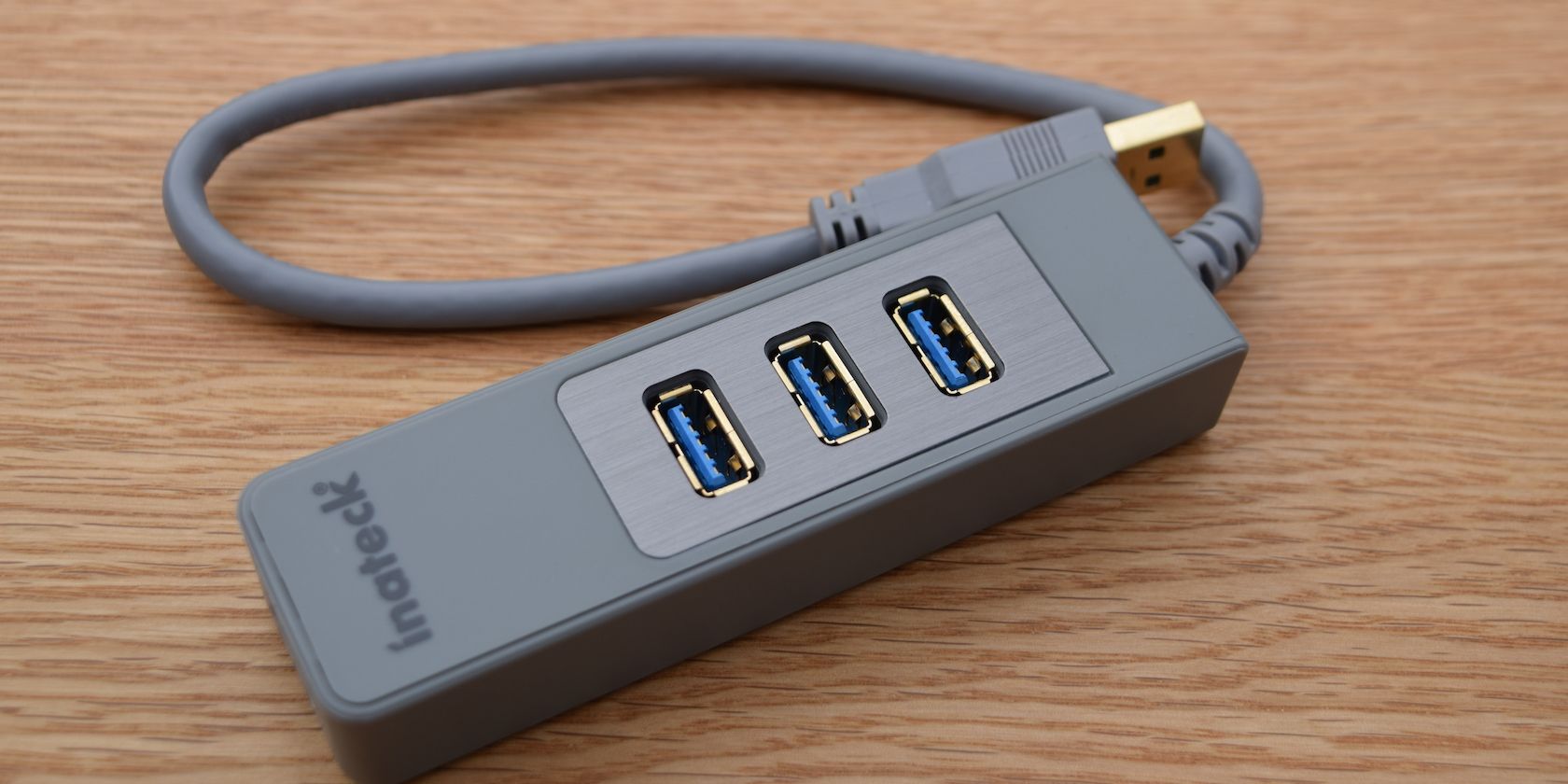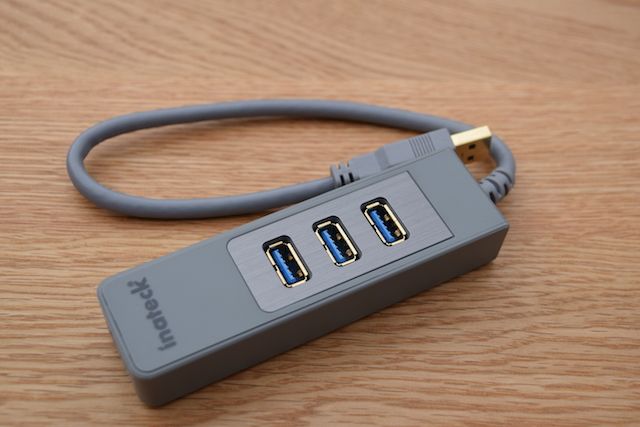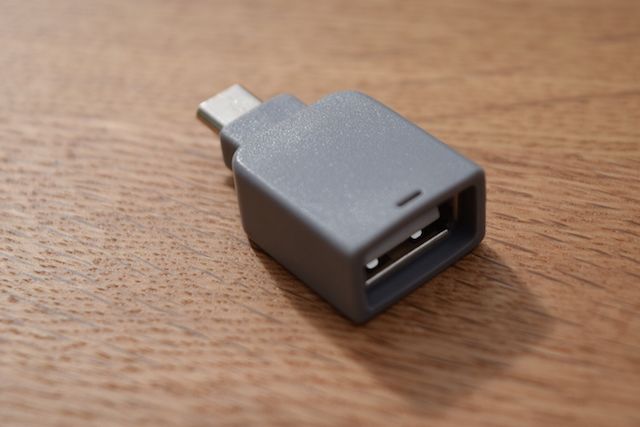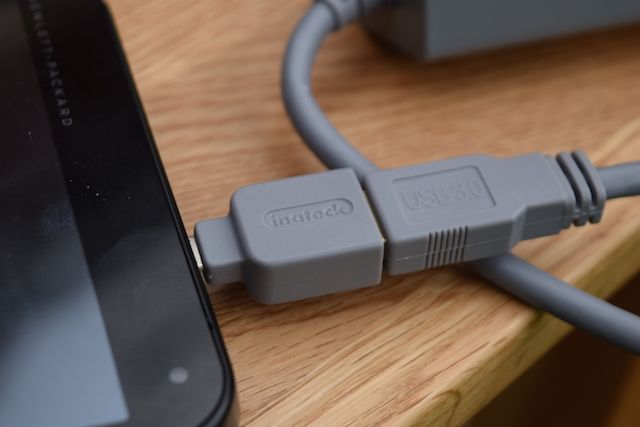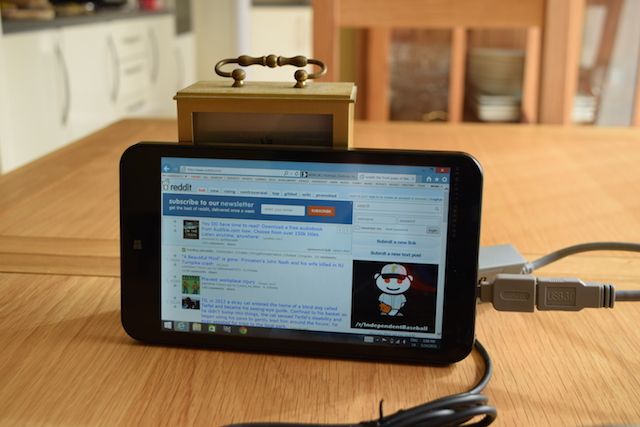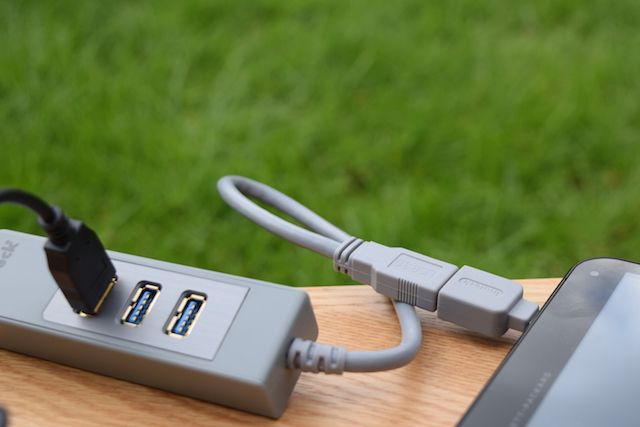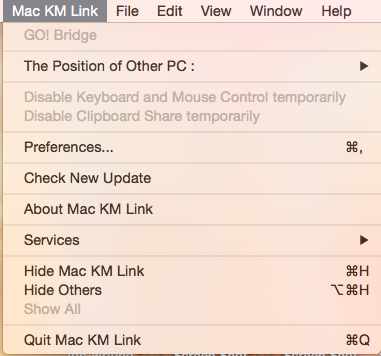Inateck 3-port USB Hub and KM Switch
USB hubs aren't the most exciting of tech products. I mean, they're USB hubs, right? They do one job. They add an extra few USB ports to what you've got already. Boring. Right? Not necessarily. Meet the Inateck 3-port USB3 Hub with Magic Port. It's rare you see an interesting take on something so utilitarian and tedious as a USB port, but somehow they managed to do it.
The Inateck 3-port hub is more than just a USB hub, though. Costing just $24.99 on Amazon, it allows you to share files between computers, without having to use an external hard drive or Dropbox. It allows you to share a keyboard and mouse between two computers, much like a KVM switch does. Oh, and it even works well with Android.
But does this device over-promise and under-deliver? I spent a week putting it through its paces, exploring how it can connect the myriad of technological devices I use on a daily basis, and where it falls short.
Look And Feel
It's almost rodent-like in its appearance. The 'body' contains three USB expansion ports, with one tacked on at the end to connect another computer. The 'tail' is just a plain, male USB 3.0 connector that fits into any standard USB port.
It's not terribly stylish. With its rounded corners, gray chassis, and blocky aesthetic, it's not going to be winning any beauty competitions any time soon.
Also included in the package is a male-to-male USB connector, used to link two computers together, and a micro-USB adaptor, used to connect the device with tablets and phones.
Build quality is impressive. The tail USB cable is sufficiently thick that it's almost impossible to tangle. Whilst somewhat bulky and heavy in the palm, the body is made out of thick, rigid plastic that could easily withstand an accidental drop.
The Inateck hub's footprint is minimal. Measuring just 10 centimeters by 3 centimeters, this diminutive piece of kit takes up almost no space. Moreover, once finished with it, you can just wrap up the device with the cable, and stow it away for later usage.
How It Works
I wanted to see how well this particular piece of kit copes with a variety of devices, in a variety of use-cases.
Firstly, I tested core functionality - being a USB hub - before throwing any more challenging tasks at it.
I connected it to my HP Stream 7 - one of the more affordable Windows 8.1 tablets available on the market right now – using the included micro-USB adaptor, and my tablet's USB-OTG functionality.
It's fascinating. Tablets have well and truly cannibalized sales of PCs. They killed the Netbook. Apple makes billions from the sale of their iPads. But despite that, they're not very useful, are they?
I mean, have you ever tried to get some serious work done on a tablet? Sure, tablets can do much what PCs can. You can write a document on a tablet, or build a web-app, but can you do it without incurring massive frustration? Not really.
Tablets are awful productivity machines, and are best reserved for binge-watching episodes of Seinfeld on Netflix, than any actual busy-work. For that, you can blame the inherently restrictive natures of iOS and Android, the diminutive screen sizes of most tablets, and the sheer awfulness of typing anything lengthy on a virtual keyboard.
But despite that, the Inateck USB hub made it possible for me to actually get some work done on a device that's usually gathering dust in a closet, than being used for anything important. Once I'd propped it up, plugged in the Inateck device, and connected a standard Logitech keyboard, I was writing articles and responding to emails at a normal speed.
The only flaw I found was with the micro-USB connector, which was flimsy and constantly falling out.
Initially, I was worried about the relative shortage of USB ports available. But despite my initial fears, I soon realized three is more than enough for most use-cases. Each of the ports spaced sufficiently wide enough to accommodate even the chunkiest of USB devices.
Input and File Sharing
As previously mentioned, the Inateck hub works as a KVM switch. Well, kind of.
The acronym "KVM" stands for "keyboard, mouse, video". Standard KVM switches allow you to share input devices and monitors with multiple computers, switching between them as required. The Inateck hub only allows you to share a keyboard and mouse. Therefore, it's not true KVM. But it's still a useful thing to have.
Perhaps one of the most impressive features is that it allows you to share the keyboard and trackpad from one computer, with another. So, for example, if you've got one Mac laptop and one Android tablet, you could quite easily control the Android tablet from your Macbook Pro's keyboard and trackpad.
That in itself is quite interesting, but in practice, it's a lot more fiddly than that. I found it can be quite hard to position the secondary tablet in a way that's actually useful.
The coup-de-grace of the Inateck hub is the ability to make a direct link between two computers, and transfer files from PC to PC, PC to Mac, or Mac to PC. This, in theory, would make the humble USB hard-drive and Dropbox utterly redundant. But how does it pan out in practice?
Well, it's somewhat of a mixed bag.
Let's start with the good: when it does work, copying files is merely a matter of dragging and dropping from one computer to another. The connection is made over USB 3.0, which results in blazingly-fast file sharing, and a sizable HD movie can be copied over in a matter of minutes.
It's never been easier to transfer files from PC to PC, Mac to PC, or even PC to Mac. But, it's a fiddly beast, often taking multiple tries to actually get working. Connections can drop and falter.
The manufacturers insist that both this, and the keyboard and mouse sharing, is done without installing any third party drivers. Whilst that's true, it's also quite deceptive, as this functionality is contingent on using a third-party application. The Mac app is called MacKMLink, and although basic, is rather clunky and often requires a bit of poking to actually work.
Troubleshooting it can be hard, as it routinely produces unhelpful and confusing error messages.
Alternatives
The Inateck 3-port USB hub does the job of multiple, wildly different devices. It's fair to say it's the Swiss Army Knife of USB hubs. Consequently, it's hard to make a direct comparison between other devices on the market, because there simply aren't any that exactly match what this piece of kit does.
You could get a dedicated KVM switch. Whilst the Inateck hub only supports keyboard and mouse sharing, a dedicated KVM switch can share input, audio and video between multiple computers. They're deceptively cheap, too. You can get a solid KVM switch, like the IOGEAR GCS72U, on Amazon for $22.
If you wanted to get a dedicated, hardware-based file sharing solution, you could just get a generic computer-to-computer link. These cost as little as $20 on Amazon, like the Belkin Easy File Transfer Cable.
Alternatively, you can always use a software solution. File sharing can be easily done with the likes of Dropbox or BitTorrent Sync, both of whom have compelling free options, as well as premium paid ones.
There are even a plethora of free, software-based KVM switches. Perhaps the most notable is Synergy, which we have previously featured.
Should You Get It?
For its versatility, the Inateck USB3 hub can't really be rivaled. I just wish it was a bit more polished, and less frustrating to use. Despite the absence of any finesse, it wins on value. It does the job of multiple, expensive peripherals, at a fraction of the cost. Moreover, it wins on flexibility. The Inateck device is truly cross-platform. No matter whether you prefer: Android, OS X or Windows; this piece of kit can work with whatever you've got.
[recommend]Buy it. Despite its warts and flaws, this powerful piece of kit should be in the tool-belt of any self-respecting geek.[/recommend]
Inateck 3-port USB3 Hub with Smart Port
Send your products to be reviewed. Contact James Bruce for further details.

